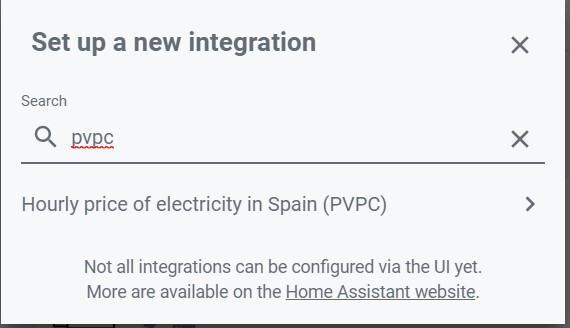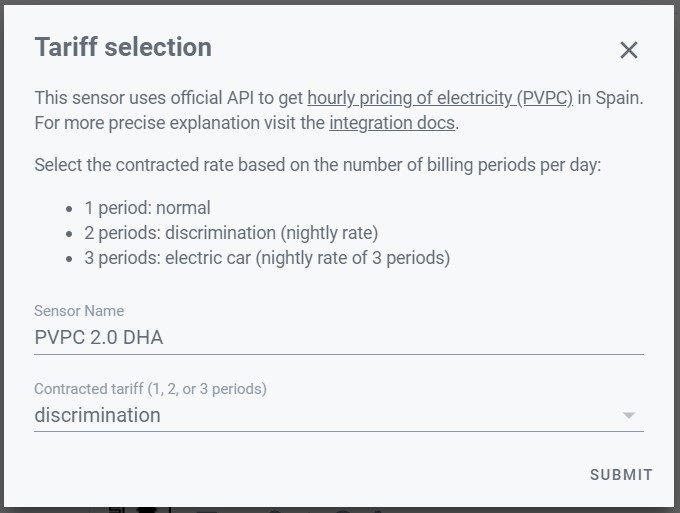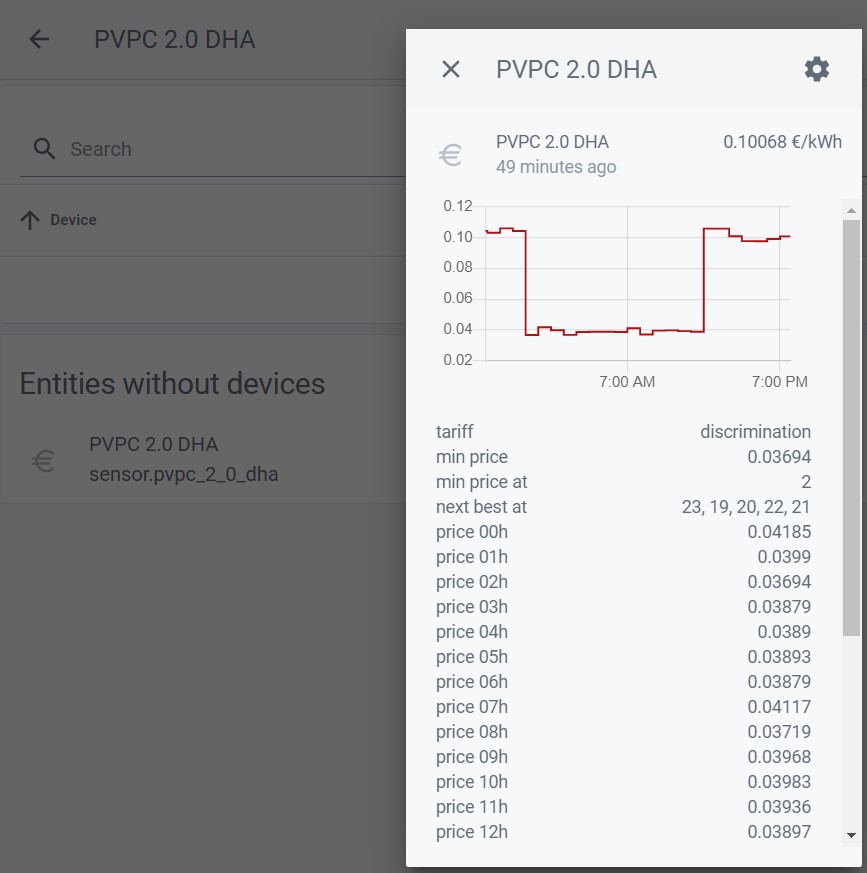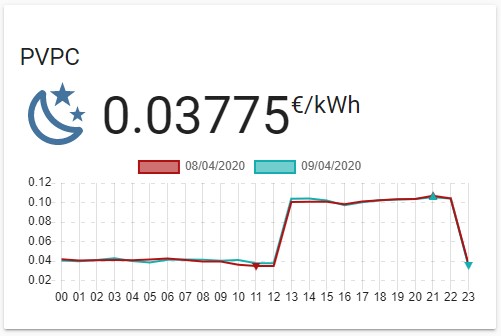PVPC tariff prices in Home Assistant
As of the date of publication of this article, just one month ago I changed my electricity rate to Hourly Pricing of Electricity (PVPC), which is the spanish government-regulated hourly electricity rate.
This rate is characterized by offering a different price for light for each hour of the day. Thus, the consumer will have 24 light prices for each day.
As if this were not enough, you have at your disposal several tolls, that is, periods in which prices change drastically during certain hours of the day. It is therefore important to know the price of light in each hour in order to get the maximum benefit from the PVPC tariffs.
Configuration
Luckily for us, Eugenio Panadero has created an integration to give us all the information and to be able to integrate it in a very simple way in Home Assistant.
The integration is available natively from version 0.108 of Home Assistant. If you have a smaller version, a custom component is available for its installation.
Visual configuration
The easiest way to configure the integration is from the Configuration -> Integrations menu of Home Assistant. We add a new integration and search for pvpc.

Next, indicate a name and the type of rate contracted. Save.

You will have available a sensor with the name you indicated in the previous step with all the information.

You can configure up to 3 sensors, one for each available rate.
Advanced settings
As usual with Home Assistant integrations, it can also be configured by modifying the configuration.yaml file and adding the following lines of code:
pvpc_hourly_pricing:
- name: "PVPC 2.0 DHA"
tariff: discrimination
The tariff field admits normal, discrimination and electric_car according to whether we have contracted 1, 2 or 3 periods respectively.
Dashboard
Although the integration brings quite a lot of data regarding PVPC, when showing it in a Dashboard with Lovelace we see that there is no card that can visually display the full daily or next day’s price.
That’s why I’ve created a Custom Card to be able to see more or less in our Dashboards the same graphic that we have available in the System Operator Information System website.
In this other article you can see how to install and configure the card.

Conclusion
In a simple way, the PVPC (Voluntary Price to the Small Consumer) integration has been configured and a personalized card where you can see all the available data in a very visual way.
Now all that remains is to try to use the appliances that consume the most in the cheapest hours of the day and enjoy the benefits of these types of rates.
This and other articles complement the documentation of the GitHub repository where all the configuration of my house is available.





